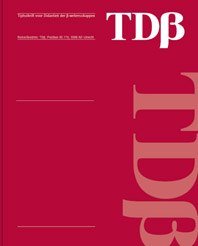Twee verschillende werelden die bij elkaar horen Two different worlds that belong together

Tijdschrift voor Didactiek van de Beta-wetenschappen, uitgegeven door het Freudenthal Instituut, Universiteit Utrecht in de periode 1983-2014 |
Vogelezang, M. Buck, P. Rehm, M. Tijdschrift voor Didactiek van de Beta-wetenschappen |
In the article a way is sketched to develop a concept of atoms different from the common view of atoms as being little bits of a substance. An analysis of properties of substances on one side and those attributed to the micro particles to explain the first on the other side, reveals that there is no one-to-one relationship between the macro and the micro world and that both worlds require their respective language. Mass can be used in both worlds. Dalton took mass as the distinctive property of an atom. By the discovery of radio activity the atomic mass turned out to be different for different atoms of the same element. Nowadays, the relative atomic masses are defined in relation to the atomic mass unit, because the mass of an ensemble of protons and neutrons is different from the sum of the lone particles. If these aspects are to be dealt with in chemistry education, there must be a gradual introduction into the alien world of atoms. The way proposed in this article is by starting with the idea of nested systems, in which the different components cannot explain the properties of the system as a whole. So an idea of an atom or a molecule as a system, consisting of different parts, each with different properties as the atom or molecule as a whole is conceived.
U moet ingelogd zijn om een reactie te kunnen plaatsen.


